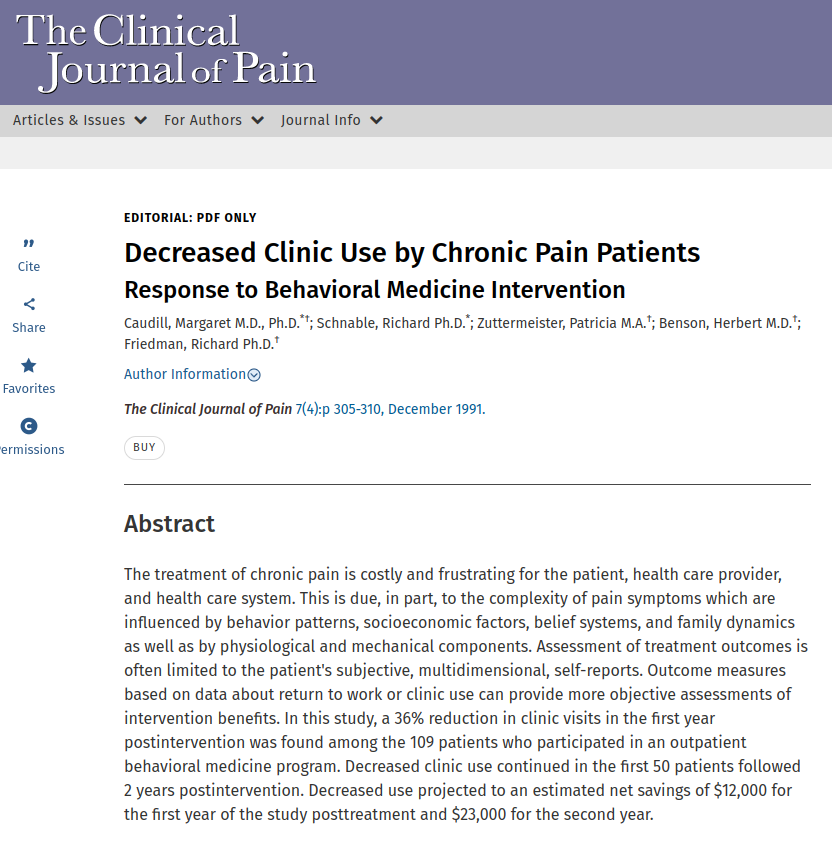The treatment of chronic pain is costly and frustrating for the patient, health care provider, and health care system. This is due, in part, to the complexity of pain symptoms which are influenced by behavior patterns, socioeconomic factors, belief systems, and family dynamics as well as by physiological and mechanical components. Assessment of treatment outcomes is often limited to the patient’s subjective, multidimensional, self-reports. Outcome measures based on data about return to work or clinic use can provide more objective assessments of intervention benefits. In this study, a 36% reduction in clinic visits in the first year postintervention was found among the 109 patients who participated in an outpatient behavioral medicine program. Decreased clinic use continued in the first 50 patients followed 2 years postintervention. Decreased use projected to an estimated net savings of $12,000 for the first year of the study posttreatment and $23,000 for the second year.
Decreased Clinic Use by Chronic Pain Patients Response to Behavioral Medicine Intervention
Publication
The Clinical Journal of Pain
7(4): p. 305-310
Abstract
Web and Email Links
Related Listings
Journal
PLOS ONE
Mind-body practices that elicit the relaxation response (RR) have been used worldwide for millennia to prevent and treat disease. The RR is characterized by decreased oxygen consumption, increased exhaled nitric oxide, and reduced psychological distress. It is believed to be the counterpart of the stress response that exhibits a distinct pattern of physiology and transcriptional profile. We hypothesized that RR elicitation results in characteristic gene expression changes that can be […]
Journal
Yoga Alliance
About This Workshop 70-90% of all primary care visits in America are related to chronic stress and stress-related illnesses such as anxiety, depression, PTS, heart disease, headaches, GI disruptions, and more. In the next workshop of the Scientific Research series, Yoga Alliance Director of Research, Dr. Sat Bir Singh Khalsa is joined by Dr. John Denninger, Director of Research at the Benson-Henry Institute for Mind Body Medicine at Massachusetts General Hospital and Harvard Universit […]
Journal
Journal of Human Stress
Human pupillary dilatation after topical instillation of phenylephrine was assessed in a prospective, randomized, controlled experiment to measure alterations in α-end-organ responsivity after regular elicitation of the relaxation response. Baseline pupillometric measurements were taken in both experimental and control subjects. The experimental subjects then practiced daily a technique that elicited the relaxation response while the control subjects sat quietly for comparable periods […]

